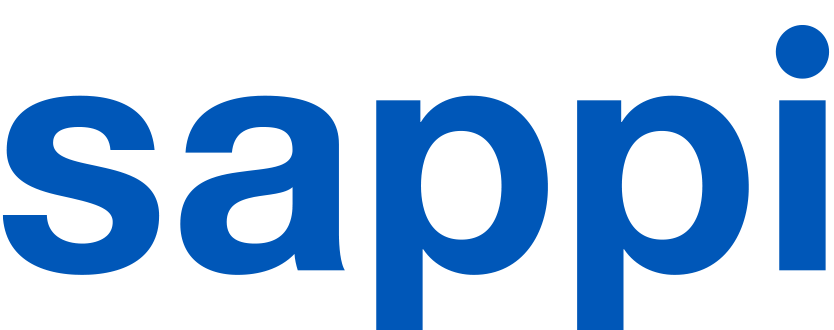
-
Products & Services
- Services
Education and support
 Education and supportCreative resources to learn more about paper, printing and everything in between.
Education and supportCreative resources to learn more about paper, printing and everything in between. -
Sustainability & Impact
Fresh Facts on Fresh Fibre
 Fresh Facts on Fresh FibreLearn how to choose between fresh and recycled fibre for your next project.
Fresh Facts on Fresh FibreLearn how to choose between fresh and recycled fibre for your next project.The Power of Trees
 The Power of TreesWhere the power of trees meets the strength of Sappi.
The Power of TreesWhere the power of trees meets the strength of Sappi.Product CoC Claim Options
 Product CoC Claim OptionsYou should be confident in your supplier’s approach to sustainability.
Product CoC Claim OptionsYou should be confident in your supplier’s approach to sustainability. -
Innovation & Collaboration
Sustainable alternatives to plastic
 Sustainable alternatives to plasticUsing cellulose and woodfibre from trees
Sustainable alternatives to plasticUsing cellulose and woodfibre from treesPartner with us
 Partner with usWorking with brands to develop sustainability solutions
Partner with usWorking with brands to develop sustainability solutions - News
-
About us
Research and development
 Research and developmentWorking on tomorrow’s solutions.
Research and developmentWorking on tomorrow’s solutions.2023 Sappi Annual Integrated Report
 2023 Sappi Annual Integrated ReportContinually shaping our business.
2023 Sappi Annual Integrated ReportContinually shaping our business.

Why use paper?
Paper offers a sensory experience no other communication medium can replicate. The type of paper used can evoke a world of emotions, memories, experiences shared and those still to come – it can say so much, without using any words. We do not merely use paper, we engage with it. Paper stimulates our senses and our emotions.
A world without paper would provide information in a soulless, impersonal manner; never tangible and always dependent on an electronic device, batteries and power sources. A world without paper would provide would have no sustainable, renewable and biodegradable solution for packaging. Imagine a world without paper: no books to snuggle up with in bed; no magazines with views, trends and features to read and share with friends; nothing on which to scribble your brilliant ideas or to practise your art; no sheet of music when playing your piano and no packaging to protect valuable goods in transit. Not even toilet tissue or kitchen wipes.
How does paper compare with digital media?
Digital media has its place, but paper is still very much part of our daily lives - that’s true even for the younger generation. A survey by a UK bookseller found that three-quarters of students would prefer to use physical books over ebooks for their studies. The survey also showed that 76% of respondents preferred printed textbooks, compared with 18.5% who chose ebooks and 5.5% who opted for digital courseware.
Perhaps this relates to another survey which showed that digital media can be distracting: 'The reading process and experience of digital text are greatly affected by the fact that we click and scroll, in contrast to the tactilely richer experience when flipping through the pages of a printed book'.
Did you know that trees fight climate change?
Through photosynthesis, trees and other plants use water and sunlight to convert carbon dioxide (CO2) into carbohydrates to provide energy and the building blocks for plant growth. The process releases oxygen as a by-product. The CO2 removed from the atmosphere is converted and stored in plant material and wood. In other words, trees and the use of forest products – like paper and paper packaging – can act as carbon sinks. In all regions, our industry has played a significant role in expanding forests and plantations. Harvesting is not equal to deforestation. It is an important part of the cycle of growth, materials manufacture and regrowth. Learn more with our FAQ on climate change.
- Paper is used in thousands of different applications every day, and can be made tough enough to withstand acid or soft enough to use on a baby’s skin.
- Paper is made from a sustainable resource, is recyclable, biodegradable and locks up carbon throughout its life.
- It’s not print versus digital: It’s a balance of both.
Is the woodfibre Sappi uses to make paper responsibly sourced in South Africa?
Yes, it is. Here’s why.
- Each year in South Africa, harvesting is balanced by replanting.
- We do not harvest trees from indigenous forests.
- Up to a third of our landholdings are responsibly managed as conservation areas to protect and promote biodiversity.
- Our plantations are dual-certified by the Forest Stewardship Council™ (FSC-NOO3159) (FSC™) and the Programme for the Endorsement of Forest Certification™ (PEFC). Forest certification is a well-established tool to ensure that responsible forest management practices are implemented in plantations and forests and also that woodfibre from certified forests can be identified throughout the supply chain.
- The story of our non-woodfibre use is even more impressive, incorporating sugar cane fibre (bagasse); reclaimed fibre (broke) from our own manufacturing process; as well as collected fibre (post-consumer waste) bought in from recycling agents.
Learn more in our FAQ on Certification.
What does Sappi grow on its plantations in South Africa?
In South Africa, we own and lease 399,996 hectares (ha) of plantations, of which 261,605 ha are planted. The remainder is managed by Sappi Forests to conserve the natural habitat and biodiversity found there. Sappi Forests enhances our fibre base in South Africa through leading-edge tree improvement programmes which aim to produce high-quality wood with the required pulping characteristics, increase yield per hectare and mitigate against pests and diseases. We actively pursue this aim, particularly through the genetic improvement of planting stock. An example is enhancing our tree breeding process through the development of DNA marker tools which speed up the tree selection process. Learn more in our FAQ on Genetically Modified Trees.
Is paper biodegradable?
Yes. Paper comes from nature and it returns to nature. Not only is it strong, versatile, beautiful, re-usable and recyclable, it is also fully biodegradable. In seawater conditions – much of the world’s garbage ends up in our oceans – paper generally biodegrades fully within four months, returning to nature without leaving any toxic residue. This is in sharp contrast to fossil-fuel based plastics and other non-biodegradable materials which can take hundreds of years to degrade.
Is Sappi’s manufacturing environmentally responsible?
Although our manufacturing activities have some impact on the planet, we aim to tread as lightly as possible. We are achieving this is by establishing five-year targets under our Thrive25 strategy – and aligned with the United Nations Sustainable Development Goals.

We report every year on progress – or lack thereof – against these targets in our group sustainability report and our Sappi Southern Africa corporate citizenship report, available in our resource hub.
Does Sappi take environmental responsibility for paper and packaging once it enters the marketplace?
Our responsibility to the environment does not end once our papers enter the marketplace.
Our waste paper division’s name, ‘Sappi ReFibre’ reflects the broad nature of our commitment to re-use what many people classify as waste. We recycle post-convertor and post-consumer waste, procured from homes, offices, wholesalers, retailers and manufacturers, in both the formal and informal sectors, through an extensive network of independent collection agents across the country.
Sappi ReFibre has developed a successful outsourced business model that supports entrepreneurial development and job creation while providing a secure market for recovered paper.



